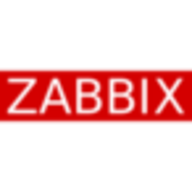

Zabbix and Splunk Observability Cloud compete in the monitoring software space. Zabbix holds an advantage for users with high-cost sensitivity due to its comprehensive, no-cost model and robust feature set.
Features: Zabbix delivers comprehensive monitoring with flexibility and scalability, featuring automated network and item discovery and a powerful API for customization. It is known for its continual improvements with new versions. Splunk Observability Cloud offers advanced monitoring for cloud-native apps with detailed insights via user-friendly dashboards and quick deployment, handling large data volumes effectively.
Room for Improvement: Zabbix needs to enhance its user interface and reporting capabilities to be more user-friendly for non-technical users, along with better capacity planning, security solutions, and AI integration. Splunk Observability Cloud should focus on reducing pricing, improving integration with configuration management solutions, and expanding on-premises support.
Ease of Deployment and Customer Service: Zabbix supports straightforward on-premises deployment with a strong community backing but requires technical expertise for setup. It offers community-based support and paid official support. Splunk Observability Cloud provides flexible deployment options for hybrid and cloud setups with responsive customer service, though improvements in on-premises support are needed.
Pricing and ROI: Zabbix is free, delivering high ROI with immediate savings on licensing and operational costs, particularly appealing for enterprises with large networks. Splunk Observability Cloud is costly due to its advanced features, offering predictable pricing that is volume-based and negotiable, making it a valued investment for enterprises with complex monitoring needs.


Splunk Observability Cloud combines log search, data integration, and dashboards for seamless monitoring, enhancing infrastructure visibility and security. Its cloud integration and scalability support diverse environments, improving operational efficiency.
Splunk Observability Cloud offers comprehensive monitoring tools with user-friendly interfaces, enabling end-to-end infrastructure visibility. Its real-time alerting and predictive capabilities enhance security monitoring, while centralized dashboards provide cross-platform visibility. Users benefit from fast data integration and extensive insights into application performance. Despite its advantages, improvements could be made in integration with other tools, data reliability, scalability, and cost management. Users face challenges in configuration complexity and require better automation and endpoint protection features. Enhancing AI integration, alerts, and adaptation for high-throughput services could further improve usability.
What are the key features of Splunk Observability Cloud?In industries like finance and healthcare, Splunk Observability Cloud is implemented for application performance monitoring and infrastructure metrics. Its ability to track incidents and analyze machine data benefits network infrastructure, while distributed tracing and log analysis aid in tackling security threats. Organizations often integrate it for compliance and auditing purposes, enhancing visibility into network traffic and optimizing performance.
Zabbix is an open-source monitoring software that provides real-time monitoring and alerting for servers, networks, applications, and services.
It offers a wide range of features including data collection, visualization, and reporting.
With its user-friendly interface and customizable dashboards, Zabbix helps organizations ensure the availability and performance of their IT infrastructure.
We monitor all Application Performance Monitoring (APM) and Observability reviews to prevent fraudulent reviews and keep review quality high. We do not post reviews by company employees or direct competitors. We validate each review for authenticity via cross-reference with LinkedIn, and personal follow-up with the reviewer when necessary.